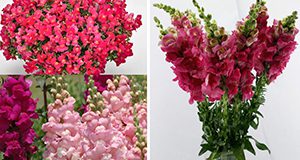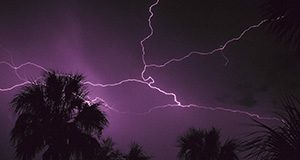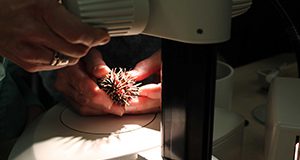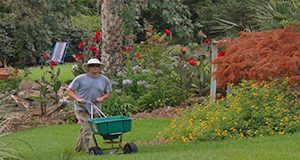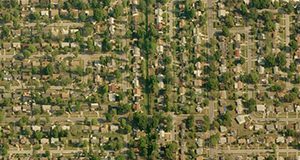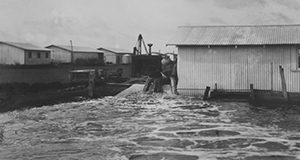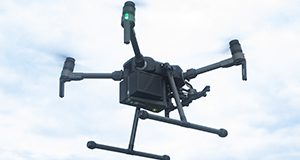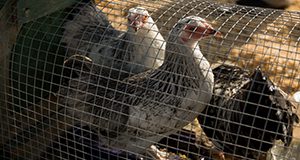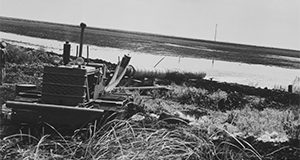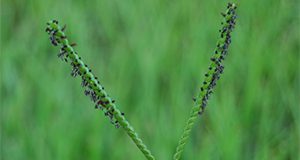This 4-page document describes the advantages of snapdragon’s elegant transposon mutagenesis system and its connection to plant breeding. Written by Zhaoyuan Lian, Heqiang Huo, Sandra Wilson, and Jianjun Chen, and published by the UF/IFAS Environmental Horticulture Department, August 2020.
https://edis.ifas.ufl.edu/ep584
Category: Popular
Strategies to Increase Personal Resilience in Disaster Response Efforts
This 3-page publication highlights strategies to help Extension professionals increase their personal resilience in disaster response efforts. Written by Amanda D. Ali, Angela Lindsey, Amy Harder, Lisa Lundy, and T. Grady Roberts, and published by the UF/IFAS Department of Agricultural Education and Communication, May 2020.
https://edis.ifas.ufl.edu/wc360
Bermudagrass Production in Florida
This 10-page document is primarily for Extension agents and farmers looking for detailed information about bermudagrass production in Florida, including cultivar characteristics, fertilization, and pest and disease management. Written by M. O. Wallau, J. M. B. Vendramini, and J. K. Yarborough, and published by the UF/IFAS Agronomy Department, revised May 2020.
https://edis.ifas.ufl.edu/aa200
Diagnostic Methods for the Comprehensive Health Assessment of the Long-Spined Sea Urchin, Diadema antillarum
This 55-page document contains a wealth of information on the long-spined sea urchin, which is an important animal in coral reef ecosystems. The publication discusses diagnostic methods for Diadema antillarum and provides reporting forms for laboratory and diagnostic work. Written by Ruth Francis-Floyd, Jan Landsberg, Roy Yanong, Yasu Kiryu, Shirley Baker, Deborah Pouder, William Sharp, Gabriel Delgado, Nicole Stacy, Tom Waltzek, Heather Walden, Roxanna Smolowitz, and Greg Beck, and published by the UF/IFAS Veterinary Medicine—Large Animal Clinical Sciences Department, May 2020.
https://edis.ifas.ufl.edu/vm244
Pi bon fason pou granmoun (kap pran swen lot moun) lave men yo
Lave men enpòtan pou redwi transfè jèm mikwòb ki soti nan matyè fekal oswa poupou pou ale nan bouch, ki ka lakoz maladi. Timoun piti ak granmoun aje yo gen mwens kapasite pou yo konbat jèm mikwòb pase lòt kategori moun. Kòm moun kap pran swen moun ou ka ede diminye risk maladi ki ka pwopaje nan anviwònman ki gen anpil moun lè w swiv bon jan metòd pou lave men w. This is the Haitian Creole version of FCS8782, Proper Hand Washing for Caregivers. Written by Amy Simonne, translated and reviewed by Emmanuel Jean Claude Duvalsaint and Nicole Monval, and published by the UF/IFAS Department of Family, Youth and Community Sciences, March 2020.
https://edis.ifas.ufl.edu/fy1490
Pi bon fason pou timoun piti (ki gen laj pou ale lekol) lave men yo
Jèm yo ka kache anba zong ki long ak nan men ki sal. Kenbe zong ou kout epi lave men w souvan, se aksyon ki pi enpòtan ou ka poze pou anpeche jèm mikwòb fè w tonbe malad. Jèm ki bay maladi tankou larim, grip, dyare, ak vomisman ka vinn nan men w lè w manyen objè ki nan alantou w. Moun, animal domestik, manje kri, jwèt, tè, ak tout objè nou itilize plizyè fwa pa jou, yo tout ka gen jèm mikwòb sou yo. Lè w lave men w byen li ede retire jèm mikwòb nan men w. This is the Haitian Creole version of FCS8783, Proper Hand Washing for School Children. Written by Amy Simonne, translated and reviewed by Emmanuel Jean Claude Duvalsaint and Nicole Monval, and published by the UF/IFAS Department of Family, Youth and Community Sciences, March 2020.
https://edis.ifas.ufl.edu/fy1491
Adecuado lavado de manos para cuidadores
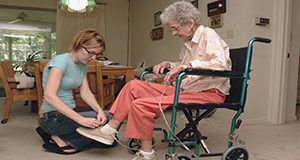 El lavado de las manos es una forma importante de reducir la transferencia fecal-oral de gérmenes que causan enfermedades. Los niños pequeños y los ancianos con limitaciones tienen menos capacidad para combatir los gérmenes que otras personas. Como cuidador, usted puede ayudar a reducir el riesgo de transmisión de enfermedades en ambientes con multitudes mediante el uso de los adecuados procedimientos de lavado de manos. This is the Spanish language version of Proper Hand Washing for Caregivers (FCS8782Eng/FY724).
El lavado de las manos es una forma importante de reducir la transferencia fecal-oral de gérmenes que causan enfermedades. Los niños pequeños y los ancianos con limitaciones tienen menos capacidad para combatir los gérmenes que otras personas. Como cuidador, usted puede ayudar a reducir el riesgo de transmisión de enfermedades en ambientes con multitudes mediante el uso de los adecuados procedimientos de lavado de manos. This is the Spanish language version of Proper Hand Washing for Caregivers (FCS8782Eng/FY724).
https://edis.ifas.ufl.edu/fy1486
Adecuado lavado de manos para ninos en la escuela
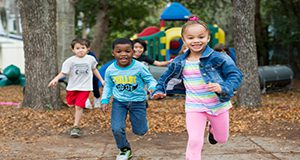 Los gérmenes pueden esconderse debajo de uñas largas y en manos sucias. Mantener las uñas cortas y lavarse las manos con frecuencia son las cosas más importantes que puedes hacer para evitar que los gérmenes te enfermen. Los gérmenes que causan enfermedades como resfriados, gripe, diarrea y vómitos pueden llegar a tus manos al tocar las cosas a tu alrededor. Las personas, las mascotas, los alimentos crudos, los juguetes, la tierra y los objetos utilizados en nuestra vida diaria pueden tener gérmenes. Lavarte las manos adecuadamente ayuda a eliminar los gérmenes. This is the Spanish language version of Proper Hand Washing for School Children (FCS8783Eng/FY725).
Los gérmenes pueden esconderse debajo de uñas largas y en manos sucias. Mantener las uñas cortas y lavarse las manos con frecuencia son las cosas más importantes que puedes hacer para evitar que los gérmenes te enfermen. Los gérmenes que causan enfermedades como resfriados, gripe, diarrea y vómitos pueden llegar a tus manos al tocar las cosas a tu alrededor. Las personas, las mascotas, los alimentos crudos, los juguetes, la tierra y los objetos utilizados en nuestra vida diaria pueden tener gérmenes. Lavarte las manos adecuadamente ayuda a eliminar los gérmenes. This is the Spanish language version of Proper Hand Washing for School Children (FCS8783Eng/FY725).
https://edis.ifas.ufl.edu/fy1487
Adecuado lavado de manos para manipuladores de alimentos
 El lavado de manos es uno de los principales métodos utilizados para ayudar a prevenir enfermedades transmitidas por los alimentos. El lavado adecuado de las manos reducirá el riesgo de transmitir microorganismos, como bacterias, virus y otros agentes, que causan enfermedades a las personas que comen los alimentos que manipulas. Si necesita usar desinfectante para las manos, ¡siempre lávate las manos primero! La suciedad, los alimentos o cualquier otra cosa en las manos hacen menos eficaz el efecto del alcohol. ¡No use desinfectante para manos en lugar de lavarse las manos! This is the Spanish language version of Proper Hand Washing for Food Handlers (FCS8784Eng/FY726).
El lavado de manos es uno de los principales métodos utilizados para ayudar a prevenir enfermedades transmitidas por los alimentos. El lavado adecuado de las manos reducirá el riesgo de transmitir microorganismos, como bacterias, virus y otros agentes, que causan enfermedades a las personas que comen los alimentos que manipulas. Si necesita usar desinfectante para las manos, ¡siempre lávate las manos primero! La suciedad, los alimentos o cualquier otra cosa en las manos hacen menos eficaz el efecto del alcohol. ¡No use desinfectante para manos en lugar de lavarse las manos! This is the Spanish language version of Proper Hand Washing for Food Handlers (FCS8784Eng/FY726).
https://edis.ifas.ufl.edu/fy1488
Adecuado lavado de manos para adultos mayores
 Lavarse las manos es una forma importante de reducir la propagación de enfermedades infecciosas. Los gérmenes de origen humano y animal pueden transmitirse a las manos, que a su vez pueden transmitir los gérmenes a otras personas, alimentos y cualquier otra cosa que toquen. El adecuado lavado de las manos puede reducir la cantidad de microorganismos infecciosos en nuestras manos y reducir el riesgo de contraer algunas enfermedades. This is the Spanish language version of Proper Hand Washing for Elders (FCS8785Eng/FY727).
Lavarse las manos es una forma importante de reducir la propagación de enfermedades infecciosas. Los gérmenes de origen humano y animal pueden transmitirse a las manos, que a su vez pueden transmitir los gérmenes a otras personas, alimentos y cualquier otra cosa que toquen. El adecuado lavado de las manos puede reducir la cantidad de microorganismos infecciosos en nuestras manos y reducir el riesgo de contraer algunas enfermedades. This is the Spanish language version of Proper Hand Washing for Elders (FCS8785Eng/FY727).
https://edis.ifas.ufl.edu/fy1489
Urban Fertilizer Ordinances in the Context of Environmental Horticulture and Water Quality Extension Programs: Frequently Asked Questions
Excess nitrogen (N) and phosphorus (P) in water bodies are a leading cause of water quality degradation statewide. More than 50 Florida counties and municipalities now have formal fertilizer ordinances, which in some cases include fertilizer blackouts, or bans on the usage of N and P fertilizers during certain times of the year. This 8-page document provides information on the underlying issues of fertilizer use, with an emphasis on an urban setting, and outlines the current state of the science on urban fertilizers and water quality in Florida. Written by Michael D. Dukes, Lisa Krimsky, Mary Lusk, Laurie Trenholm, Bryan Unruh, Michelle Atkinson, and Rao Mylavarapu, and published by the UF/IFAS Department of Agricultural and Biological Engineering, February 2020.
https://edis.ifas.ufl.edu/ae534
What Does Florida Weather during the Past 20 Years Look Like?: Florida Weather Represented by the Florida Automated Weather Network (FAWN)
This 8-page document gives an overview of Florida temperature and rainfall during the past 20 years based on historical FAWN data to provide information about the temporal and spatial trends of Florida weather and the frequency and size of extreme weather events such as heavy rainfall and drought. This document also investigates the characteristics of drought and heavy rainfall in relation to hurricanes and tropical storms. Written by Satbyeol Shin, Young Gu Her, Geraldina Zhang, and William Lusher, and published by the UF/IFAS Department of Agricultural and Biological Engineering, January 2020.
https://edis.ifas.ufl.edu/ae537
Residential Irrigation Water Costs in Osceola County and Orange County, Florida
Interest in understanding water use and irrigation costs has risen in recent years. This case study is a 5-page evaluation of water use and associated costs for residential landscape irrigation in Osceola County and Orange County, Florida. Homeowners in central Florida can use the results to assess their water consumption and bills in relation to similar homes in the area. Written by Nick Taylor, Tricia Kyzar, Pierce Jones, and Kaitlin O. Robb Price, and published by the UF/IFAS Department of Agricultural and Biological Engineering, December 2019.
https://edis.ifas.ufl.edu/ae536
Hurricane Preparedness for Forage Crops in the Southeast United States
This 4-page document provides information on preparing forage crops, conserved forage, and grazing areas for potential hurricane damage and alleviating hurricane damage on forage crops and grazing lands in the Southeast United States, with an emphasis on the Florida peninsula and Gulf Coast. Written by José C. B. Dubeux, Jr. and Edward K. Twidwell, and published by the UF/IFAS Agronomy Department, November 2019.
http://edis.ifas.ufl.edu/ag439
Preflight and Flight Instructions on the Use of Unmanned Aerial Vehicles (UAVs) for Agricultural Applications
This 5-page document provides guidance on the appropriate use of unmanned aerial vehicles (UAVs) for agricultural applications in Florida. It contains step-by-step instructions for preparing a UAV for flight, creating a mission path (using flight mission planning apps), and collecting UAV-based data. Written by Sri Charan Kakarla, Leon De Morais Nunes, and Yiannis Ampatzidis, and published by the UF/IFAS Department of Agricultural and Biological Engineering, November 2019.
http://edis.ifas.ufl.edu/ae535
Raising Backyard Chickens for Eggs
Raising backyard chickens is an increasingly popular way to explore self-sufficiency, connect with how our food is produced, and gain experience for future dabbling in food production. This 13-page publication is designed primarily for those considering raising backyard chickens for eggs for personal consumption. Written by Mary E. Henry, Jessica M. Ryals, Alicia Halbritter, and Derek L. Barber, and published by the UF/IFAS Department of Animal Sciences, revised November 2019.
http://edis.ifas.ufl.edu/an239
Postflight Data Processing Instructions on the Use of Unmanned Aerial Vehicles (UAVs) for Agricultural Applications
Remote sensing applications for agriculture often require periodically collected high-resolution data, which are difficult to obtain by manned flights or satellite imagery. This 6-page document provides guidance on the use of post-processing software to visualize data collected by unmanned aerial vehicles (UAVs) for agricultural applications. It provides step-by-step instructions for using the data collected from a UAV flight to create several types of maps and indices. Written by Sri Charan Kakarla and Yiannis Ampatzidis, and published by the UF/IFAS Department of Agricultural and Biological Engineering, October 2019.
http://edis.ifas.ufl.edu/ae533
Rice Physiology, Products, and Critical Steps Associated with Postharvest Operations in Southern Florida
This 5-page document pertains to the UF/IFAS Extension programs related to rice production in the EAA and focuses on the steps that comprise postharvest processing of rice (drying, tempering, milling, and storage). It aims to highlight the physiology of the rice kernel and define some of the common terms used in the rice industry, elaborate on the steps in postharvest processing, and provide a brief overview of rice products and their market potential. Written by Jehangir H. Bhadha, Sangeeta Mukhopadhyay, Charlene Andrews, and Matthew VanWeelden, and published by the UF/IFAS Agronomy Department, September 2019.
http://edis.ifas.ufl.edu/ag438
The Value of Tropical Plant Diversity
This new 5-page document discusses plant diversity at the UF/IFAS Tropical Research and Education Center, environmental factors and human activities affecting these plants, assemblages of species based on levels of disturbance, human choice, and other factors, and the diverse needs these plants meet. Written by Cliff G. Martin and Zachary T. Brym, and published by the UF/IFAS Agronomy Department, June 2019.
http://edis.ifas.ufl.edu/ag435
Bahiagrass (Paspalum notatum Flueggé): Overview and Pasture Management
This 10-page document discusses bahiagrass forage cultivars, forage production, nutritive value, animal performance, planting, pasture renovation, management, and more. Written by Marcelo Wallau, Joao Vendramini, José Dubeux, and Ann Blount, and published by the UF/IFAS Agronomy Department, revised July 2019.
http://edis.ifas.ufl.edu/ag342
